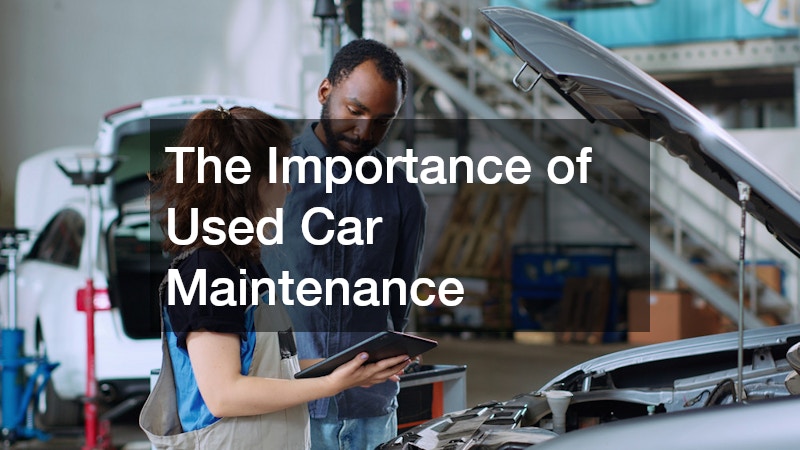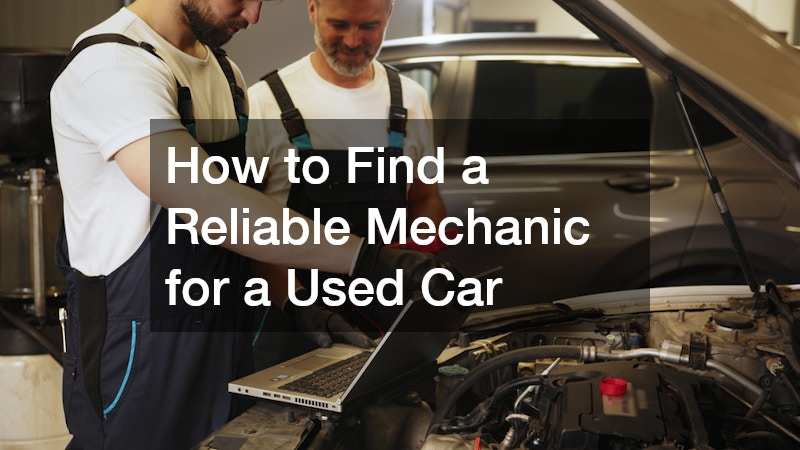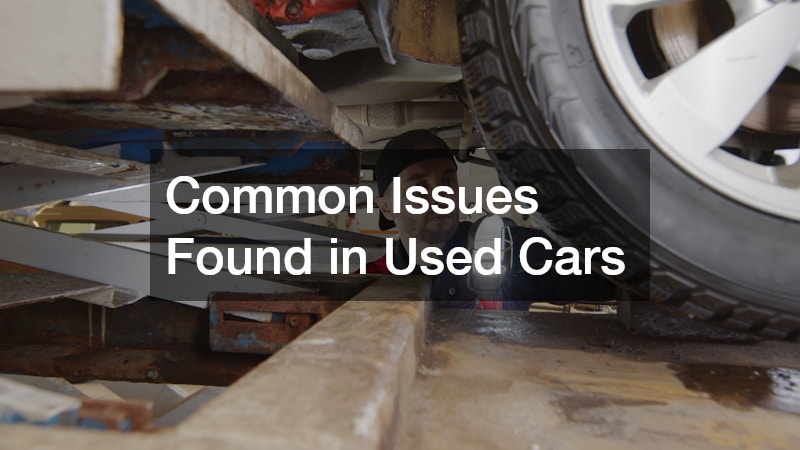Used Car Maintenance and You
In recent years, the used car market has witnessed a significant surge in popularity. From budget-conscious buyers to eco-minded consumers, more people are turning to pre-owned vehicles as a practical and sustainable alternative to purchasing new ones. However, with this choice comes a responsibility—ensuring that the vehicle continues to perform well, remains safe, and retains its value through proper maintenance. While used car maintenance presents several unique advantages, it also involves a distinct set of challenges that differ from those encountered with new vehicles.
Buyers are often drawn to used cars because of the significantly lower initial purchase price and slower depreciation rate compared to new vehicles. However, skipping or delaying maintenance on a used car can quickly erase those savings, leading to costly repairs or reduced vehicle lifespan. It’s this balance—between affordability and accountability—that defines the used car ownership experience. Additionally, the maintenance history of a used car can be inconsistent or even unknown, making proactive care even more essential. With the right knowledge and routine service, however, owning a used vehicle can be both economical and rewarding.
Used car ownership also fosters a deeper sense of involvement and responsibility for drivers. While new car warranties can create a set-it-and-forget-it mindset, used cars demand attentiveness and strategic planning. This often leads owners to become more knowledgeable about vehicle systems, service schedules, and cost-saving techniques. In a way, maintaining a used car becomes a learning experience—one that builds automotive confidence and encourages a more mindful approach to transportation.
The Importance of Used Car Maintenance

Used car maintenance isn’t just a good idea—it’s a necessity. Unlike a new vehicle that comes fresh from the factory with zero wear and tear, a used car has already had a history. Every component, from the engine to the tires, has experienced a degree of stress, and without proactive care, even minor issues can escalate into major (and expensive) problems.
In addition to performance and safety, maintaining a used car also enhances driving enjoyment. A car that has responsive handling, strong brakes, and a reliable engine fosters a better overall experience on the road. Proper auto repair habits—such as regularly checking fluid levels and replacing worn parts—transform what could be a liability into a dependable daily driver or even a cherished long-term investment. Most importantly, routine maintenance helps prevent catastrophic failures that could lead to accidents or costly emergency repairs, ensuring peace of mind for used car owners.
Regular maintenance also helps extend the lifespan of critical components, reducing the frequency and cost of major repairs. For example, timely oil changes prevent sludge buildup that can damage the engine, while regular tire rotations ensure even wear that improves fuel efficiency and safety. By creating and following a maintenance schedule, owners take active steps to preserve the vehicle’s condition and overall value.
Basic Maintenance Tasks for a Used Car
Basic maintenance for a used car involves more than just oil changes. While oil and filter replacements are fundamental, other tasks—like brake repairs—are especially critical in used cars. The braking system, already subjected to wear, must be checked regularly to avoid reduced stopping power or complete failure.
Suspension inspections and wheel alignments are also crucial since uneven roads and previous owners’ driving habits may have caused imbalances. These can lead to premature tire wear or poor handling. For vehicles with higher mileage, it’s wise to schedule regular inspections of the radiator, ignition system, and fuel injectors, all of which contribute to smooth, efficient operation as part of your used car maintenance routine. Furthermore, don’t overlook systems like the HVAC and steering, which are often ignored until they fail. By tackling these areas early, you ensure your vehicle remains safe and comfortable.
Battery maintenance is another vital but often forgotten task. Older batteries may hold less charge or be more susceptible to extreme temperatures. Cleaning the terminals, checking voltage levels, and replacing the battery at the first sign of weakness can save you from inconvenient breakdowns. Additionally, inspecting belts and hoses for wear and cracks can prevent costly engine damage caused by overheating or fluid loss.
How to Find a Reliable Mechanic for a Used Car

Finding a trustworthy mechanic is essential for any car owner, but it’s especially vital when dealing with used vehicles. The best mechanics are transparent, certified, and well-reviewed in the community. Look for shops that specialize in your car’s make and model, and don’t hesitate to ask about warranty coverage for parts and labor.
It’s also smart to establish a long-term relationship with a mechanic you trust. Familiarity with your vehicle’s service history allows them to detect subtle changes and recommend preemptive care. If your used vehicle includes components like a tonneau cover or specialty performance upgrades, seek a technician experienced with those accessories to ensure nothing gets overlooked during maintenance visits. You might also consider joining local automotive groups or online forums where members often share referrals to reputable mechanics who offer fair pricing and honest assessments.
In addition, look for mechanics who use digital inspection tools and send reports with photos and videos of your car’s condition. These tools not only provide transparency but also help you make more informed decisions. A reliable mechanic will also be willing to explain their recommendations in plain language, fostering trust and confidence in the service they provide.
Maintenance Cost of Used Cars: More Expensive vs. New Cars
There’s a common debate: Is maintaining a used car more expensive than maintaining a new one? The answer depends on several variables, but in general, used cars may incur higher maintenance costs over time due to the need for part replacements, labor, and increased frequency of service.
However, not all used cars are created equal. Vehicles that were well-maintained by previous owners may actually cost less to maintain than some new models with design flaws or recalls. Additionally, used vehicles often have a broader selection of aftermarket parts available, which can reduce repair costs. When factored with vehicle insurance savings, the total expense of ownership may still favor the used option for many drivers. That said, it’s crucial to budget for maintenance proactively—set aside a small fund specifically for repairs and upkeep to avoid financial surprises.
Common Issues Found in Used Cars

When you purchase a used car, you inherit its history—good and bad. Some of the most common problems in older vehicles include worn-out brakes, corroded exhaust systems, faulty suspensions, and aging batteries. Engine oil leaks and transmission slips also become more likely as the vehicle ages.
Another issue to watch for is neglected emissions components, such as malfunctioning oxygen sensors or evaporative emissions systems, which can trigger the check engine light and lead to failed inspections. In the worst-case scenario, overlooked problems can lead to a need for tow service, so it’s essential to address early warning signs before they unexpectedly strand you. Checking service records, test-driving thoroughly, and being alert to unusual sounds or smells can help uncover issues that may not be visible during a casual inspection.
How Often to Service a Used Car
Service intervals for used cars vary based on mileage, driving conditions, and manufacturer recommendations, but as a general rule, oil changes should occur every 3,000 to 7,000 miles. Major components—like the transmission, brakes, and timing belt—should be inspected at regular intervals, even if no symptoms are present.
Additionally, weather and regional driving conditions play a role. For example, in areas with high humidity, rain, or snow, you may need more frequent undercarriage inspections to guard against rust. Regular manual car washes help remove salt, debris, and grime buildup that could damage exposed parts, especially in older vehicles where protective coatings may have worn down. Creating a seasonal checklist based on your car’s age and region-specific risks is a smart way to stay ahead of required maintenance.
What to Look for in a Pre-Purchase Inspection

Before buying a used vehicle, it’s critical to invest in a comprehensive pre-purchase inspection. An experienced mechanic can spot red flags such as frame damage, fluid leaks, uneven tire wear, or poor repair work—all of which can hint at deeper problems.
Be sure to check for signs of prior accidents, mismatched paint, or uneven panel gaps, which could indicate structural repairs. Inspecting the auto glass for pitting, chips, or improper replacements is also crucial, as damaged glass compromises both safety and visibility. A detailed inspection gives you leverage in negotiations and prevents costly surprises after purchase. Make sure the inspection covers all major systems and includes a road test, as many issues only become apparent under real-world conditions.
Should You Perform Used Car Maintenance Yourself
Many car owners take pride in DIY maintenance. Tasks like oil changes, air filter replacements, and battery swaps are relatively straightforward and can save money when done correctly. However, more complicated repairs—like timing belt replacements or suspension overhauls—are better left to professionals, especially diesel mechanics for diesel vehicles.
Still, performing your own maintenance can build a deeper understanding of your car’s mechanics and alert you to early signs of trouble. Investing in a repair manual, diagnostic scanner, and quality tools can pay for themselves over time. Even routine checks like tire pressure and fluid levels are small DIY habits that contribute significantly to the longevity of your used car. Always follow safety guidelines, and if in doubt, consult a professional to avoid mistakes that could lead to further damage.
How to Keep Track of Used Car Maintenance History
Maintaining a thorough service history is one of the smartest things you can do as a used car owner. Not only does it help you stay on top of required maintenance, but it also increases resale value and provides transparency for future buyers.
Several mobile apps and software tools make tracking maintenance easier than ever. You can log services, set reminders for oil changes or inspections, and even upload photos of receipts. Include any major upgrades or accessories, like a towing hitch, that affect your vehicle’s performance or structural integrity. A well-documented history tells the story of a cared-for car and can be a deciding factor in its resale appeal. Additionally, having an organized record reduces the risk of overlooking essential maintenance tasks, which helps avoid preventable breakdowns.
Environmental Benefits of Used Car Maintenance
Proper maintenance of used cars isn’t just good for your wallet—it’s also good for the planet. Keeping older vehicles in top condition reduces the need for new car production, which significantly lowers your carbon footprint. Manufacturing a new car consumes a tremendous amount of energy and resources, so extending a vehicle’s life through maintenance is an eco-friendly choice.
Moreover, opting for mobile auto detailing services rather than full-scale repainting or part replacements can reduce material waste and emissions. Simple steps—like keeping your engine tuned and tires properly inflated—also result in fewer emissions and better fuel economy. With mindful maintenance, even an older car can remain environmentally friendly and roadworthy for years.
Another benefit of used car maintenance is the reduction of landfill waste. Abandoned or poorly maintained vehicles often end up in junkyards long before their true life expectancy has been reached. By extending the usability of each component—whether it’s through timely oil changes, replacing worn-out parts, or preserving paint and upholstery—owners help decrease the volume of automotive waste.
Maintenance Moving Forward
Maintaining a used car is both an art and a science. It requires a balanced approach that includes routine inspections, basic repairs, and careful documentation. While the challenges—like unexpected breakdowns, higher part replacement frequency, and finding the right mechanic—are real, they’re far from insurmountable.
Ultimately, the benefits outweigh the inconveniences. A well-maintained used vehicle provides dependable transportation, cost savings, and a reduced environmental impact. Whether you’re tackling tasks yourself or entrusting them to a professional, staying committed to used car maintenance turns potential problems into manageable solutions—and helps ensure your vehicle continues to serve you for the long haul. Treating your used car with the care it deserves not only protects your investment but also promotes a more responsible and resource-efficient approach to modern transportation.
Just as importantly, maintaining your used car allows you to build a stronger connection with your vehicle. You’ll develop an eye for early signs of wear, gain confidence in troubleshooting minor issues, and make better financial decisions related to automotive care.


